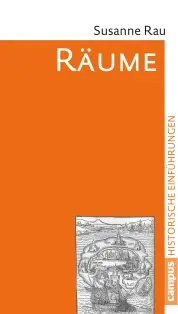Teilprojekt 1 - Räume - eine Einführung in historischer Perspektive
Einführung
Angestoßen durch die Theoriedebatten in den Sozial- und Kulturwissenschaften (insbesondere der Geographie, der Soziologie und der Kulturanthropologie) ist der spatial turn auch in der Geschichtswissenschaft angekommen. Dem Selbstverständnis einiger seiner Vertreter/innen folgend, handelt es sich dabei um eine der derzeit innovativsten ›Wenden‹, jedoch zeigt sich bei genauerer Betrachtung eine Reihe von Problemen: Die Hinwendung zum Raum ist weder mit einem gemeinsamen Forschungsziel noch mit einer klar erkennbaren Methode verbunden. Außerdem besteht eine gewisse Diskrepanz zwischen einem theoretischen Forschungsdiskurs und den dazugehörigen Appellen, sich mehr mit ›Räumen‹ zu beschäftigen, und der immer noch geringen Anzahl historischer Untersuchungen.
Das Buch führt in einem ersten Teil in verschiedene disziplinäre Zugänge zum Raum ein, geht dabei auch auf begriffsgeschichtliche Aspekte und auf die wichtigsten philosophischen und physikalischen Theorien zu Raum und – damit oft verbunden – zu Zeit ein, von denen Adjektive wie 'absolut' und 'relativ' stammen, die längst in die Alltagssprache und in den kulturwissenschaftlichen Diskurs übergegangen sind. Aufgrund der Vieldeutigkeit des Begriffs wird dafür plädiert, Raum nicht als Gegenstand, sondern als analytische Kategorie zu betrachten.
In einem zweiten Teil wird dann gezeigt, wie sich historische Raumanalysen konzipieren und durchführen lassen. Dafür wird ein spezielles (variables) Analyseraster vorgeschlagen, welches mit den Begriffen der Formationen, Dynamiken, Wahrnehmungen und Praktiken operiert. Erst damit wird eine differenziertere Sicht auf die raumzeitlichen Dimensionen spezifischer Gesellschaften, aber auch einzelner Akteure möglich. Die vorgestellten historischen Untersuchungsbeispiele entstammen vor allem aus den Bereichen Stadtgeschichte, Handelsgeschichte und Globalgeschichte, doch lassen sich die Analysen auf viele andere Felder der Geschichte übertragen.
Weitere Informationen finden Sie auf den Seiten des Campus-Verlags.
English version
Space and place – an introduction to historical perspective
Prompted by theoretical debate within the social sciences and cultural studies (particularly geography, sociology and cultural anthropology), spatial turn has also arrived in the historical sciences. According to some of its proponents, this rates as one of the most innovative ‘turns’ of the current time. Closer examination, however, reveals a series of problems: The trend towards space is connected to neither a common research objective nor a clearly discernable method. Furthermore, there is a certain discrepancy between theoretical discourse for the purposes of research and its appendant appeals to involve oneself more with ‘space and place’ on the one hand and the still limited number of historical studies in this field on the other.
The first section of the book introduces various disciplinary approaches to space and place. It also addresses aspects of conceptual history and the most important theories from philosophy and physics concerning space and – as is often connected with it – time, both of which are sources of adjectives like ‘absolute’ and ‘relative’, words which have long been adopted in everyday speech and in cultural science discourses. Due to the ambiguity of the term ‘space’, it is argued that space and place be viewed as analytical categories rather than objects.
The second section shows how historical spatial analyses can be conceived and conducted. For this purpose a special (but variable) analytical framework that utilizes the terms ‘formations’, ‘dynamics’, ‘perceptions’ and ‘practices’ will be proposed. This will enable a more differentiated understanding of the spatiotemporal dimensions of specific groups or societies, and also of individual actors. Although the case studies presented in the book are primarily from the fields of urban history, the history of trade and global history including the history of cartography, the analyses can be applied to many other historical fields.
For further information, please visit the website of the publishing house: Campus Verlag.


